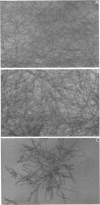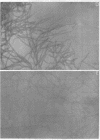Abstract
Various fatty acids of branched nature possess fungistatic and bacteriostatic properties. Some of these, particularly those of iso-configuration, strongly enhance the effect of conventional antimicrobial agents that act inside the cell membrane. A relation between this biological effect and the collapse properties of the corresponding monomolecular surface film on water has been observed. In this work, a series of fatty acids with a slightly smaller end group than iso-propyl, the ω-cyclopropane fatty acids, as well as one possessing a somewhat larger end group, the neo-branched fatty acids, have been examined. The ω-cyclopropane fatty acids were found to be more fungistatic than the iso-acids studied earlier. Furthermore, both cyclopropane and neo-fatty acids of short chain lengths exhibited synergistic effects in combination with tetramethylthiuramdisulfide.
Full text
PDF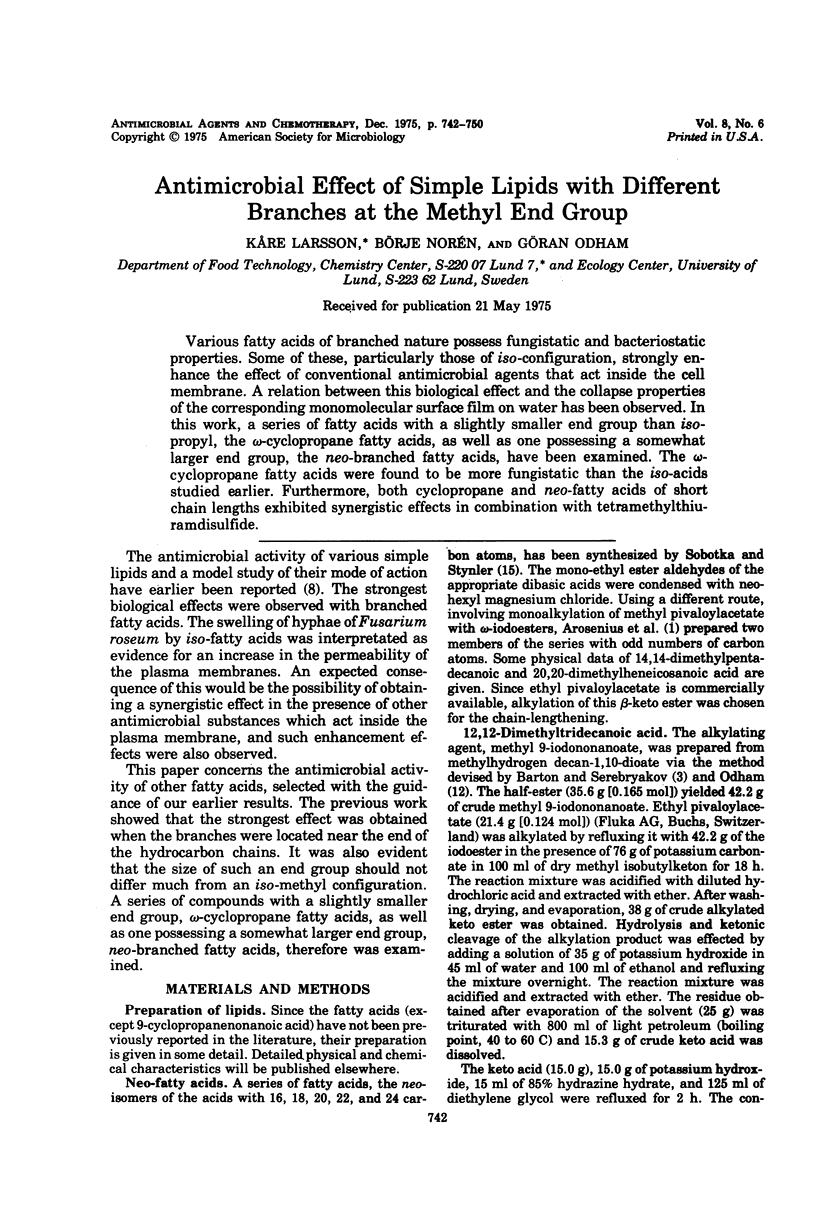
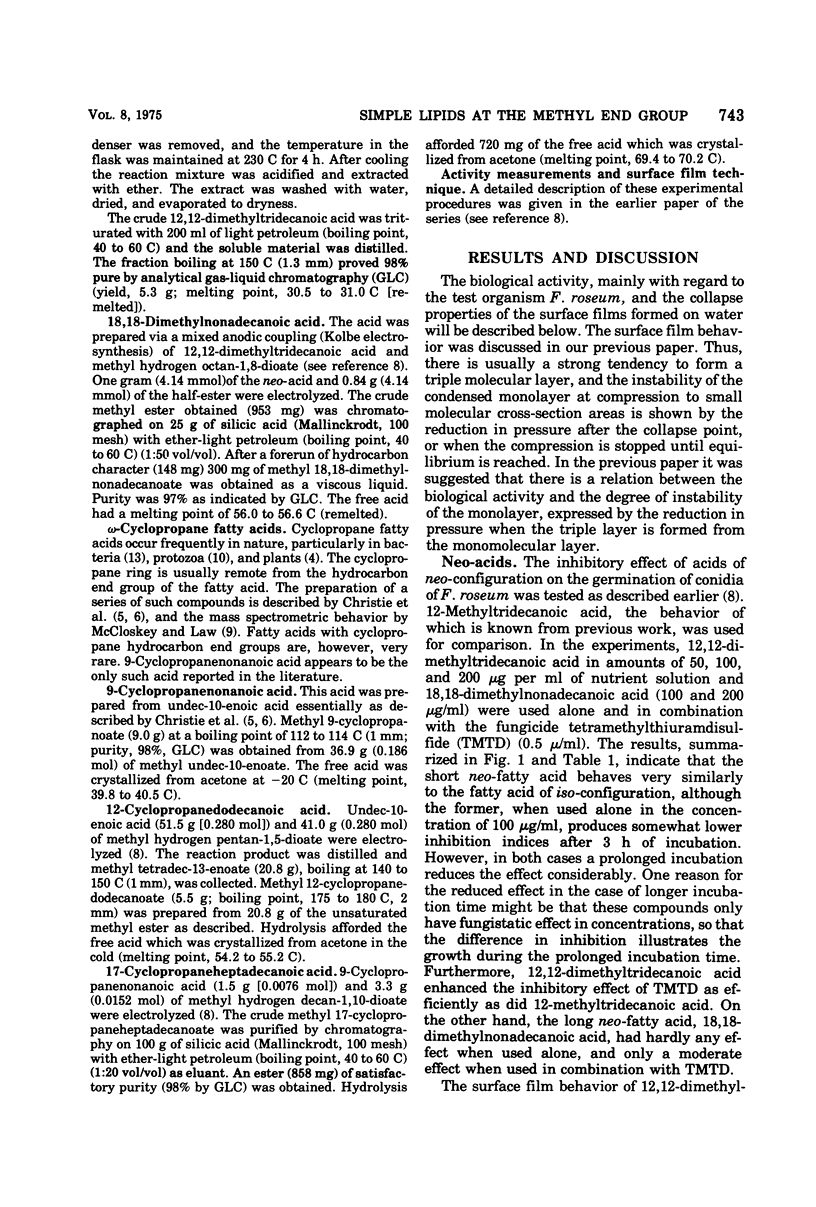

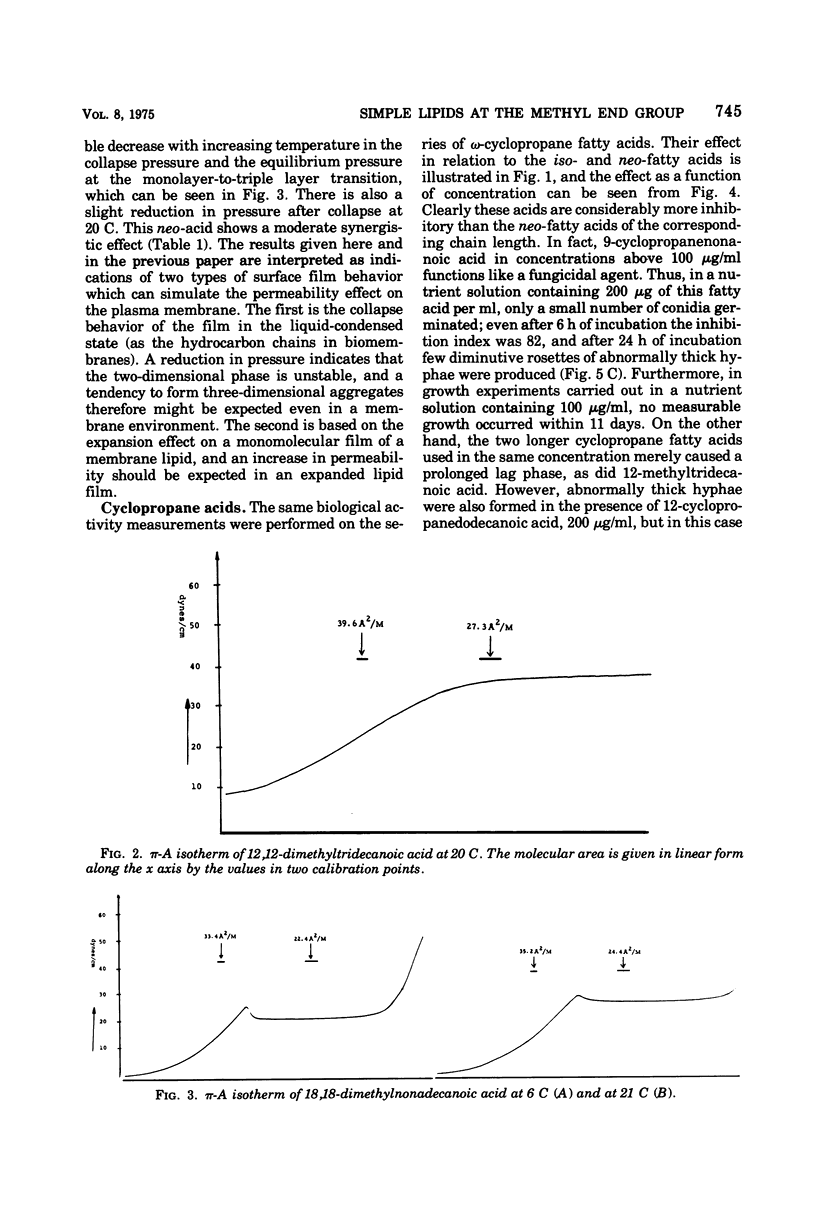
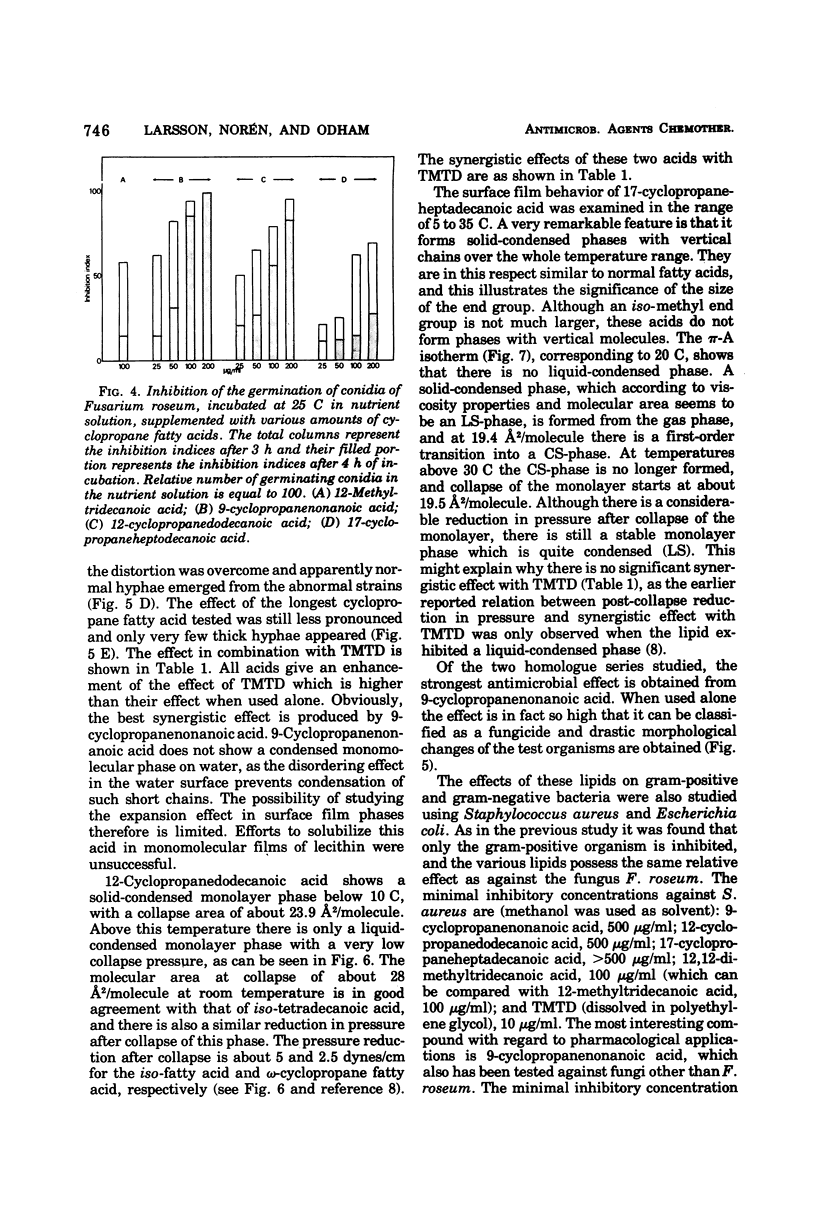
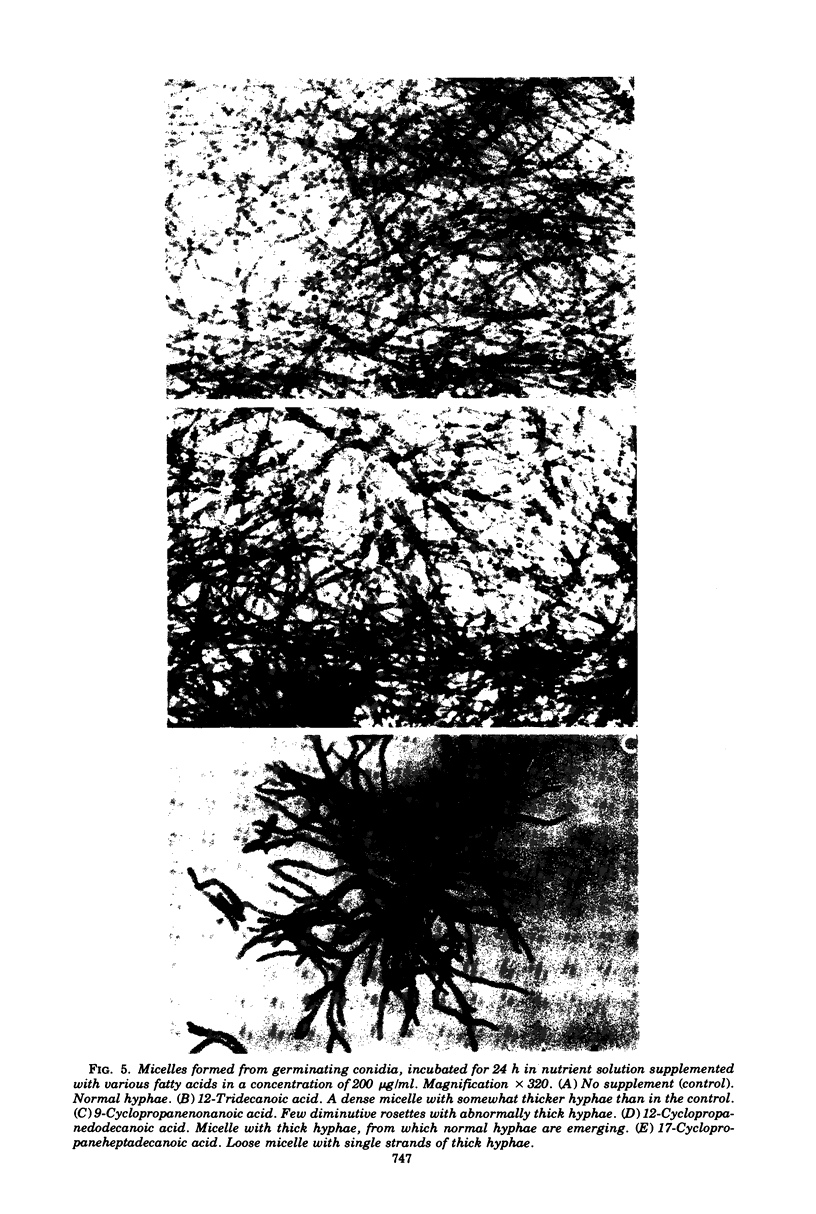
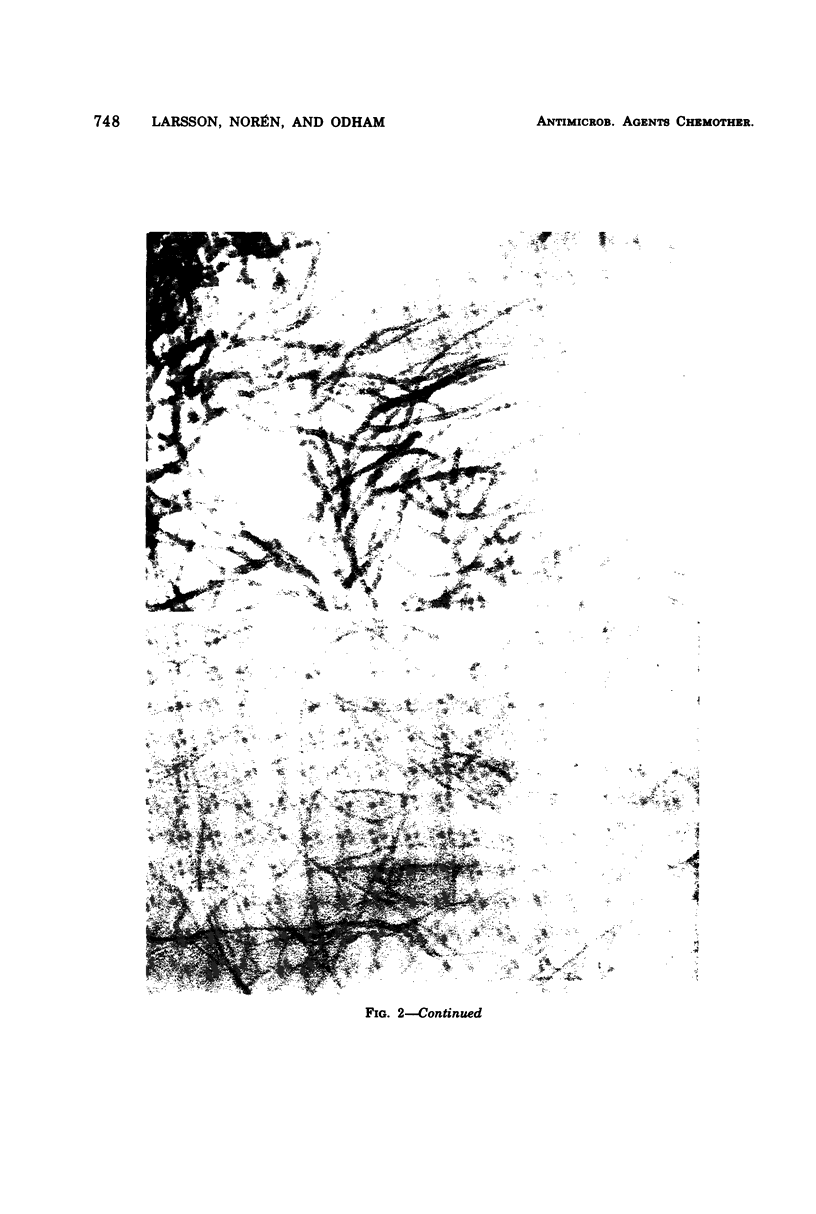
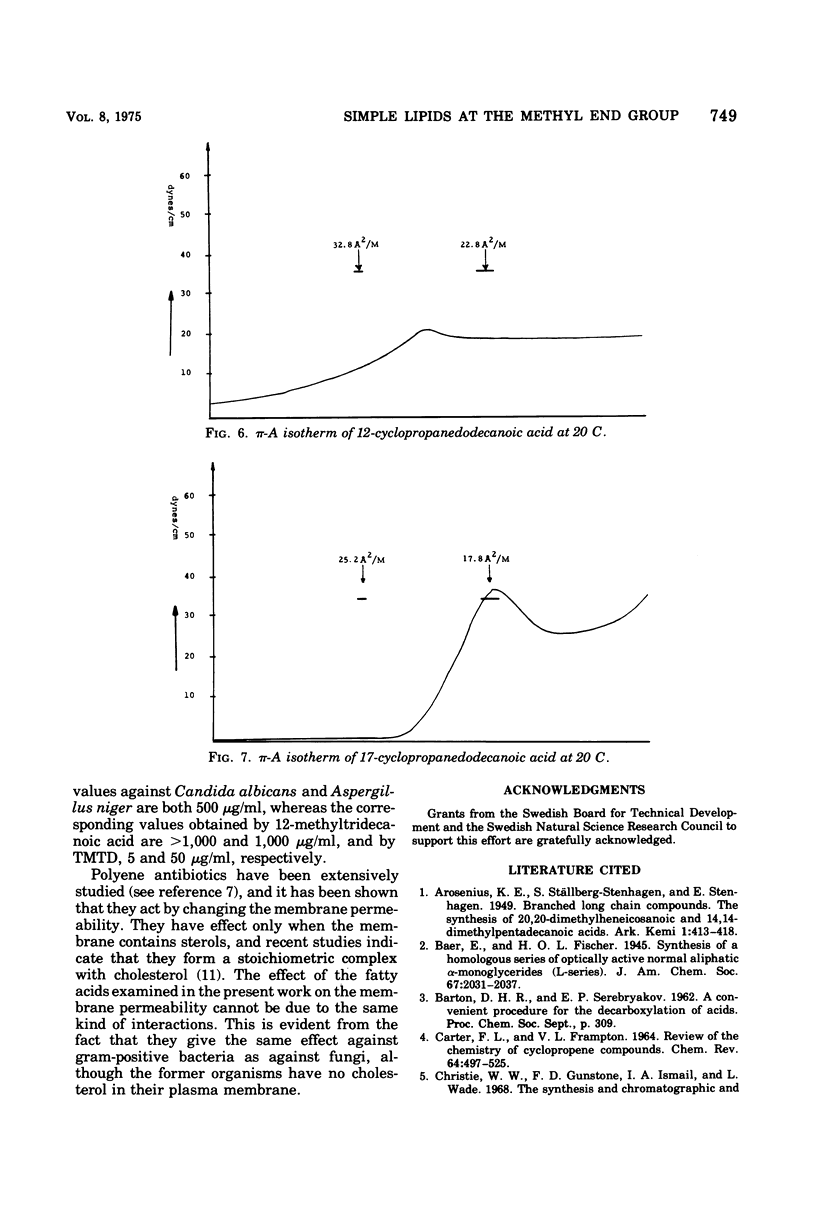
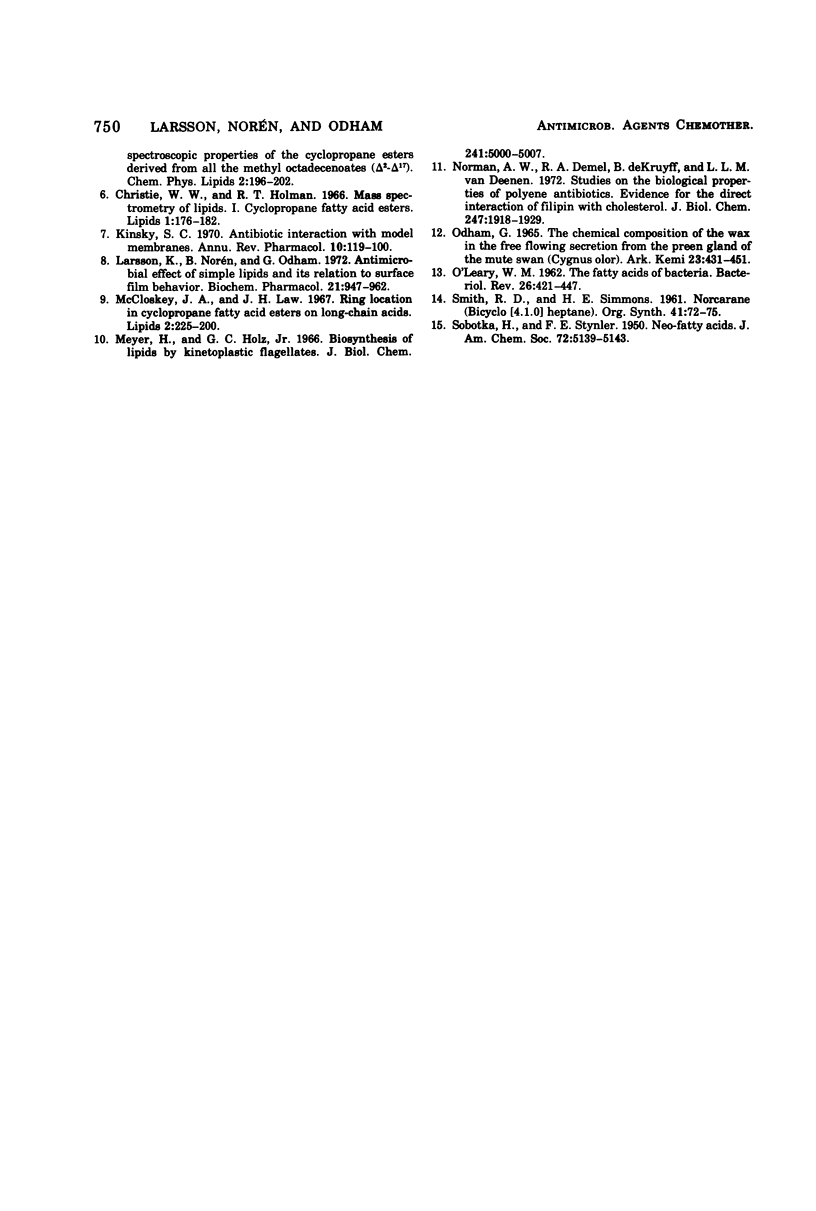
Images in this article
Selected References
These references are in PubMed. This may not be the complete list of references from this article.
- Christie W. W., Holman R. T. Mass spectrometry of lipids. I. Cyclopropane fatty acid esters. Lipids. 1966 May;1(3):176–182. doi: 10.1007/BF02531869. [DOI] [PubMed] [Google Scholar]
- Kinsky S. C. Antibiotic interaction with model membranes. Annu Rev Pharmacol. 1970;10:119–142. doi: 10.1146/annurev.pa.10.040170.001003. [DOI] [PubMed] [Google Scholar]
- Larsson K., Noren B., Odham G. Antimicrobial effect of simple lipids and its relation to surface film behaviour. I. Biochem Pharmacol. 1972 Apr 1;21(7):947–962. doi: 10.1016/0006-2952(72)90399-1. [DOI] [PubMed] [Google Scholar]
- McCloskey J. A., Law J. H. Ring location in cyclopropane fatty acid esters by a mass spectrometric method. Lipids. 1967 May;2(3):225–230. doi: 10.1007/BF02532560. [DOI] [PubMed] [Google Scholar]
- Meyer H., Holz G. G., Jr Biosynthesis of lipids by kinetoplastid flagellates. J Biol Chem. 1966 Nov 10;241(21):5000–5007. [PubMed] [Google Scholar]
- Norman A. W., Demel R. A., de Kruyff B., van Deenen L. L. Studies on the biological properties of polyene antibiotics. Evidence for the direct interaction of filipin with cholesterol. J Biol Chem. 1972 Mar 25;247(6):1918–1929. [PubMed] [Google Scholar]
- O'leary W. M. THE FATTY ACIDS OF BACTERIA. Bacteriol Rev. 1962 Dec;26(4):421–447. doi: 10.1128/br.26.4.421-447.1962. [DOI] [PMC free article] [PubMed] [Google Scholar]



